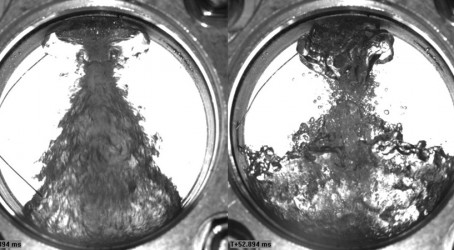A liquid air engine demonstrator is to be built within two years after an independent technical review of the concept found no insurmountable engineering obstacles that would prevent commercialisation.
The validation work, undertaken by engineers at Ricardo, appears to support the potential of the zero-emission engine as a competitor to hydrogen fuel cells and pure battery electric systems.
The Dearman engine operates through the controlled boiling of cryogenic liquids such as air or nitrogen. If this boiling takes place in a confined space, then high-pressure gas can be produced, and that can be used to do work.
Previous attempts to develop the technology have involved large and heavy high-pressure heat exchangers, making it expensive and unsuitable for mobile applications. But the Dearman design exploits a novel approach whereby the heat exchange process takes place inside the engine. Heat is provided by direct contact with a liquid heat exchange fluid. This step eliminates the heavy and expensive heat exchangers required previously.
A technical review of the design found “no challenges for which potential engineering solutions have not been identified”. As a result, Ricardo and the Dearman Engine Company are to work together on the development of the demonstration engine, due to be complete inside two years.
Ricardo’s work has confirmed two key benefits – low cost and simplicity – and the company believes these factors could aid the penetration of the technology. “In the longer term, the technology could also be suitable for small vehicles operating in urban environments,” it said.
Toby Peters, founder of the Dearman Engine Company, said: “This is a rigorous review and engine feasibility study by a respected engineering consultancy. We still have a long way to go to build a fully optimised demonstration engine, and to get people to believe using cold air as an energy vector is not hot air. Ricardo’s thumbs-up gives us confidence.”
Nick Owen, project director for research and collaboration at Ricardo UK, said: “We look forward to working with the Dearman Engine Company to help bring its technology closer towards commercial maturity.”
The technology has several potential advantages when compared with other zero-emission solutions. Capital costs are likely to be considerably less than available and emerging battery technologies. The marginal cost of additional storage is also likely to be low, as it simply requires increased tank size.
Energy density is predicted to be very competitive, and refuelling (recharging) time is a fraction of that required to recharge a battery – minutes rather than hours.
As a simple mechanical engine, the technology is likely to have a long lifetime with easy maintenance, and unlike batteries, the technology will not give degraded performance during its life, said the company.
Working alongside Ricardo, Peters said his company was also being supported by research experts from Loughborough, Brighton, Leeds and Queen Mary Universities. He said he was now planning formal fundraising to support full commercial development.

Superheating a cryogenic fluid: how the liquid air engine works
Because the working fluid is at cryogenic temperatures (-160u02daC), ambient temperatures can superheat it and return it to gaseous air.
When the piston is at the top of the cylinder, some heat exchange fluid is admitted to the engine cylinder. Immediately after this, a small quantity of cryogenic liquid is sprayed into the cylinder. It comes into contact with the ambient – but, in relative terms to the cryogenic temperatures, superhot – heat exchange fluid and boils very rapidly.
The cryogenic liquid quickly turns to gas, building up pressure in the confined space of the engine and pushing the piston down the cylinder.
At the bottom of the stroke, the exhaust valve opens. As the piston returns to the top of the cylinder, the heat exchange fluid andnow gaseous air are pushed out of the engine.
Afterwards, the cold air can be exhausted and the heat exchange fluid can be recovered for reheating and use in another cycle.
At the top of the stroke, a new cycle of the process begins.